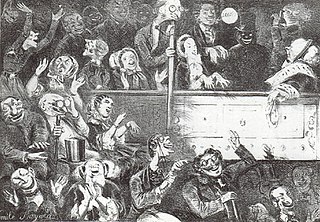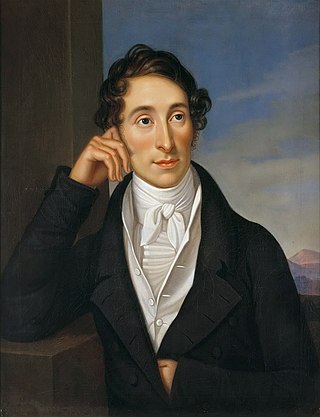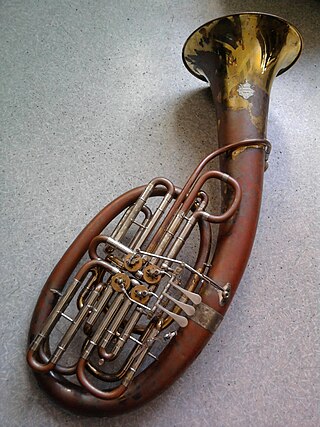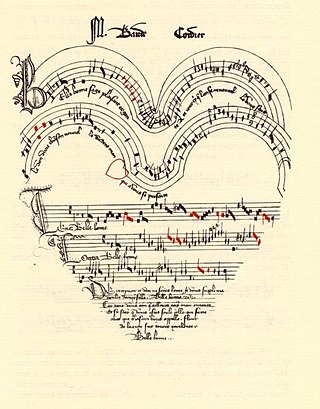Related Research Articles

Operetta is a form of theatre and a genre of light opera. It includes spoken dialogue, songs, and dances. It is lighter than opera in terms of its music, orchestral size, and length of the work. Apart from its shorter length, the operetta is usually of a light and amusing character. The subject matter may portray "lovers' spats, mistaken identities, sudden reversals of fortune, and glittering parties". It sometimes also includes satirical commentaries.

Carl Maria Friedrich Ernst von Weber was a German composer, conductor, virtuoso pianist, guitarist, and critic of the early Romantic period. Best known for his operas, he was a crucial figure in the development of German Romantische Oper.

Sir Harrison Birtwistle was an English composer of contemporary classical music best known for his operas, often based on mythological subjects. Among his many compositions, his better known works include The Triumph of Time (1972) and the operas The Mask of Orpheus (1986), Gawain (1991), and The Minotaur (2008). The last of these was ranked by music critics at The Guardian in 2019 as the third-best piece of the 21st century. Even his compositions that were not written for the stage often showed a theatrical approach. A performance of his saxophone concerto Panic during the BBC's Last Night of the Proms caused "national notoriety". He received many international awards and honorary degrees.

The Wagner tuba is a four-valve brass instrument commissioned by and named after Richard Wagner. It combines technical features of both standard tubas and French horns, though despite its name, the Wagner tuba is more similar to the latter, and usually played by horn players. Wagner commissioned the instrument for his four-part opera cycle Der Ring des Nibelungen, where its purpose was to bridge the acoustical and textural gap between the French horn and trombone.
Gustave Reese was an American musicologist and teacher. Reese is known mainly for his work on medieval and Renaissance music, particularly with his two publications Music in the Middle Ages (1940) and Music in the Renaissance (1954); these two books remain the standard reference works for these two eras, with complete and precise bibliographical material, allowing for almost every piece of music mentioned to be traced back to a primary source.

Baude Cordier was a French composer in the ars subtilior style of late medieval music. Virtually nothing is known of Cordier's life, aside from an inscription on one of his works which indicates he was born in Rheims and had a Master of Arts. Some scholars identify him with Baude Fresnel, a harpist and organist in the court of Philip the Bold, though other scholars have rejected this.

Johann Nepomuk Fuchs was an Austrian composer, opera conductor, teacher and editor. His editorial work included an important role in the preparation of the first complete edition of Franz Schubert's works. He was an older brother of the composer Robert Fuchs.
Pietro Mingotti was an Italian impresario active across continental Europe. His brother, Angelo, formed an opera company in Prague around 1732, consisting of three male singers and five females; Pietro quickly followed suit, and the two troupes achieved European-wide success, sometimes performing together. Pietro's company, the more high-profile of the two, at times included Christoph Willibald Gluck and Giuseppe Sarti as members. Most of the works performed belonged to the genre of opera seria, though opere buffe were also given. Mezzo-soprano Maria Giustina Turcotti was a member of his company from 1746-1750.

John Thomas Douglass (1847–1886) was an American composer, virtuoso violinist, conductor and teacher. He is best known for composing Virginia's Ball (1868), which is generally regarded as the first opera written by a Black American composer. The work is now lost, and his only extant composition is The Pilgrim: Grand Overture (1878) for piano. His biography from James Monroe Trotter's Music and Some Highly Musical People (1878)—in which The Pilgrim survives—reports that he wrote many now lost pieces for piano, orchestra and particularly guitar, which he was known to play.

Baroque music refers to the period or dominant style of Western classical music composed from about 1600 to 1750. The Baroque style followed the Renaissance period, and was followed in turn by the Classical period after a short transition. The Baroque period is divided into three major phases: early, middle, and late. Overlapping in time, they are conventionally dated from 1580 to 1650, from 1630 to 1700, and from 1680 to 1750. Baroque music forms a major portion of the "classical music" canon, and is widely studied, performed, and listened to. The term "baroque" comes from the Portuguese word barroco, meaning "misshapen pearl". The works of Antonio Vivaldi, George Frideric Handel and Johann Sebastian Bach are considered the pinnacle of the Baroque period. Other key composers of the Baroque era include Claudio Monteverdi, Domenico Scarlatti, Alessandro Scarlatti, Alessandro Stradella, Tomaso Albinoni, Johann Pachelbel, Henry Purcell, Georg Philipp Telemann, Jean-Baptiste Lully, Jean-Philippe Rameau, Marc-Antoine Charpentier, Arcangelo Corelli, François Couperin, Johann Hermann Schein, Heinrich Schütz, Samuel Scheidt, Dieterich Buxtehude, Gaspar Sanz, José de Nebra, Antonio Soler, Carlos Seixas, Adam Jarzębski and others, with Giovanni Battista Pergolesi being the most prominent Baroque composer of sacred music.

Trevor Noël Goodwin was an English music critic, dance critic and author who specialized in classical music and ballet. Described as having a "rare ability to write about music and dance with equal distinction", for 22 years Goodwin was Chief music and dance critic for the Daily Express. He held criticism posts at many English newspapers, including the News Chronicle, Truth and The Manchester Guardian among others; from 1978 to 1998 he also reviewed performances for The Times. Goodwin wrote an early history of the Scottish Ballet and was coauthor for two books: London Symphony: Portrait of an Orchestra with Hubert J. Foss and a Knight at the Opera with Geraint Evans.
Marianna Bianchi Tozzi was an Italian soprano best known for creating the role of Eurydice in Christoph Willibald Gluck's opera Orfeo ed Euridice (1762).
References
- ↑ Salzman & Desi 2008, p. 5.
- ↑ Rebstock 2017, p. 528.
- ↑ Clements 2001.
- ↑ Hall 2015, pp. 4–5.
- ↑ Rebstock 2017, pp. 527–531.
- ↑ Hall 2015, p. 4.
- ↑ Adlington 2019 , pp. 1–11
- ↑ Bithell 2013
- ↑ Rebstock & Roesner 2012, p. 21.
- ↑ Rebstock 2017, p. 539.
- ↑ Rebstock 2017, p. 561.
- ↑ Rebstock 2017, p. 536, 538.
- ↑ Salzman & Desi 2008, p. 4.
- ↑ Rebstock 2017, p. 529.
- ↑ Rebstock 2017, p. 545.
- ↑ Adlington 2019, p. 6.
- ↑ Walshe 2016, p. 5.
- ↑ Shlomowitz 2018, p. 72.
Bibliography
- Adlington, Robert, ed. (2019). New Music Theatre in Europe: Transformations between 1955–1975. Abingdon: Routledge.
- Bithell, David (2013). "Experimental music theater". Grove Music Online (8th ed.). Oxford University Press. doi:10.1093/gmo/9781561592630.article.A2240884. ISBN 978-1-56159-263-0.
- Clements, Andrew (2001). "Music theatre". Grove Music Online (8th ed.). Oxford University Press. doi:10.1093/gmo/9781561592630.article.19452. ISBN 978-1-56159-263-0.
- Hall, Michael (2015). Music Theatre in Britain 1960–1975. Woodbridge: The Boydell Press. ISBN 978-1-78327-012-5.
- Rebstock, Matthias; Roesner, David, eds. (2012). Composed Theatre: Aesthetics, Practices, Processes. Bristol: Intellect. ISBN 978-1-84150-456-8.
- Rebstock, Matthias (2017). "Varieties of Independent Music Theatre in Europe". In Brauneck, Manfred (ed.). Independent Theatre in Contemporary Europe: Structures–Aesthetics–Cultural Policy. Bielefeld: transcript. pp. 523–573. ISBN 978-3-8376-3243-9.
- Salzman, Eric; Desi, Thomas (2008). The New Music Theater: Seeing the Voice, Hearing the Body. New York: Oxford University Press. ISBN 978-0-19-509936-2.
- Shlomowitz, Matthew (July 2018). "Where Are We Now?". Tempo . 72 (285): 70–73. doi:10.1017/S0040298218000116. S2CID 233361685.
- Walshe, Jennifer (May 2016). "The New Discipline". MusikTexte : Zeitschrift für Neue Musik. 149: 3–25.